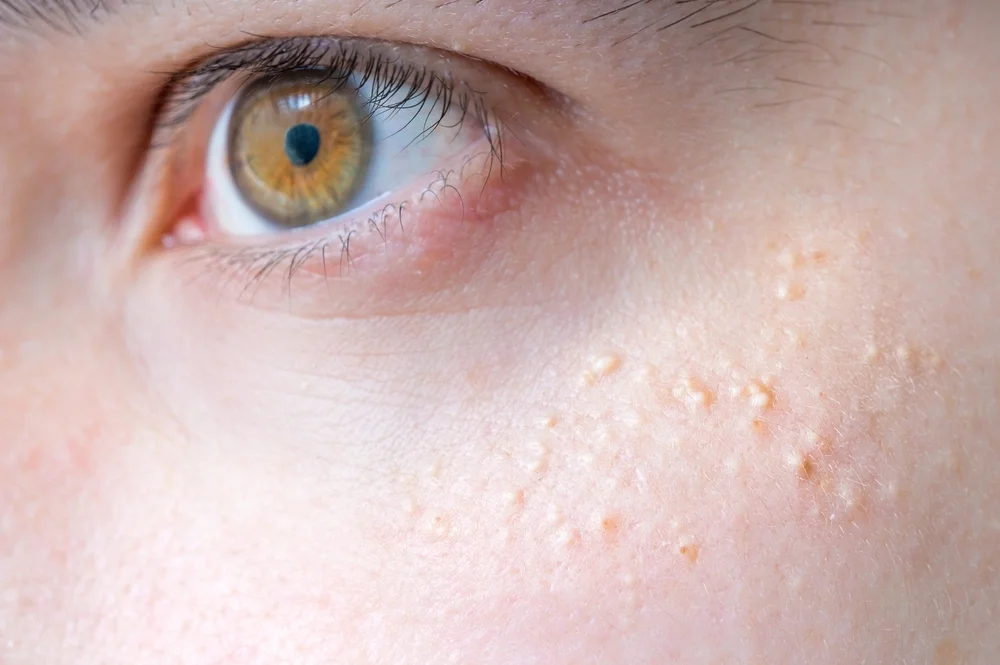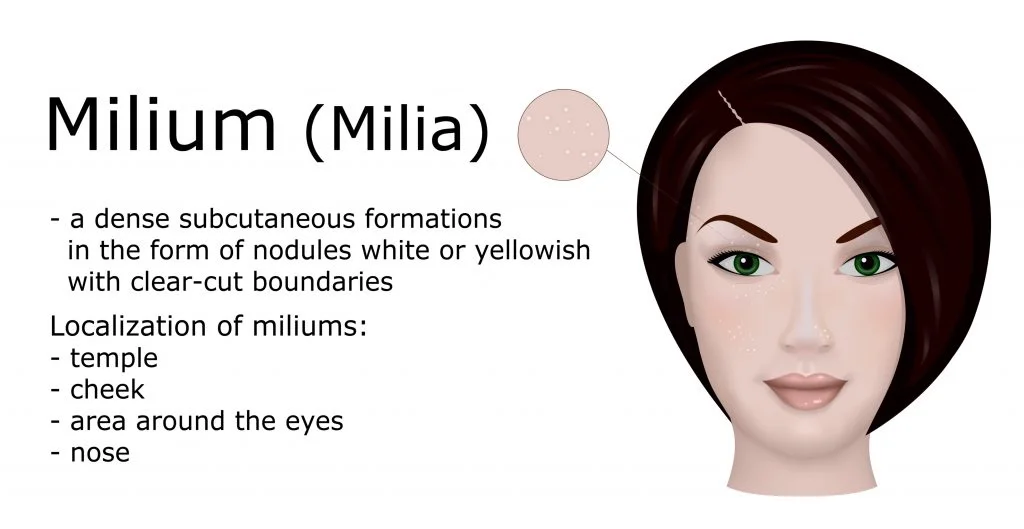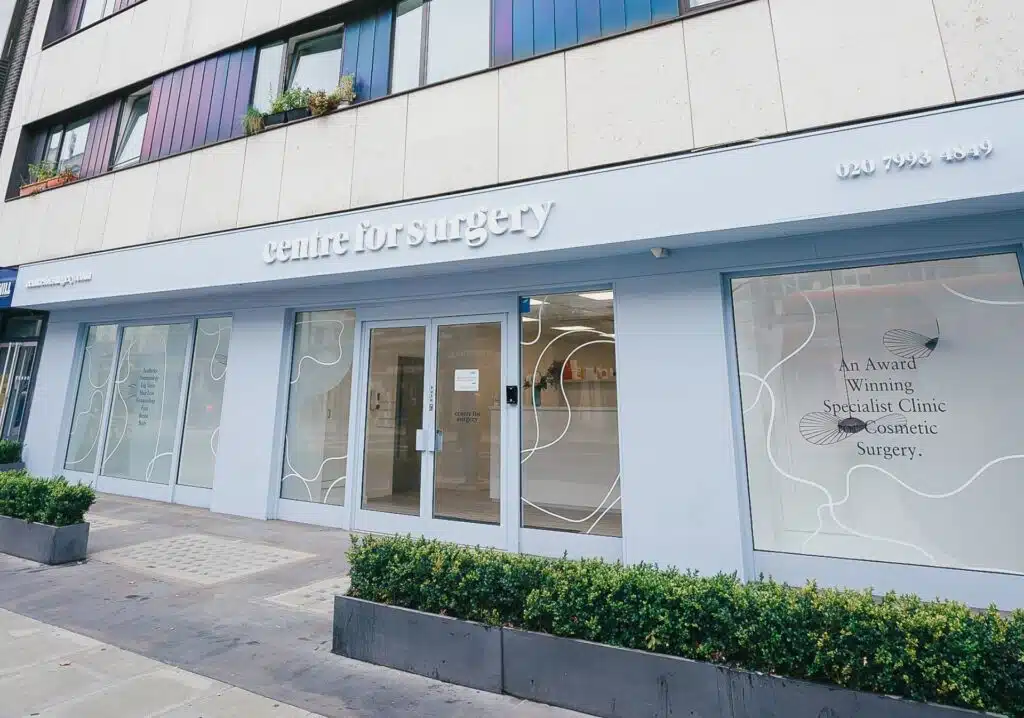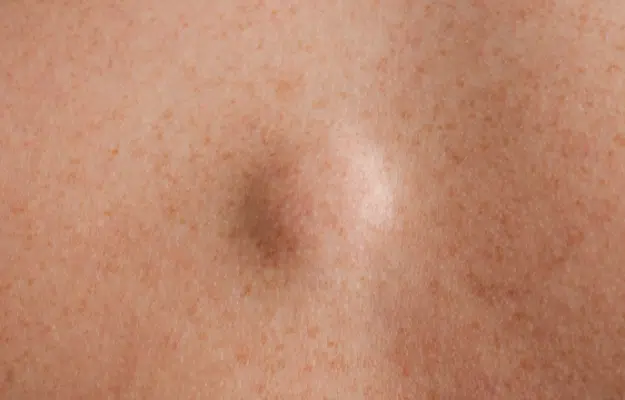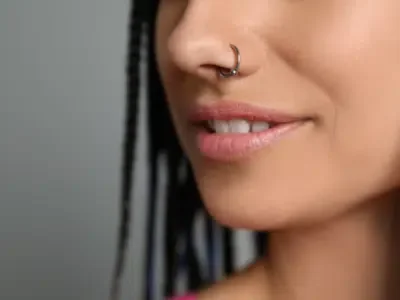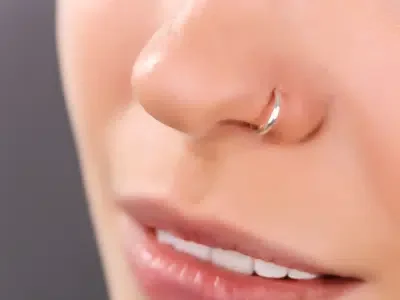Laser Milia Removal in London
Laser milia removal is a modern cosmetic procedure designed to treat milia, which are small, white bumps that commonly appear on the skin. These bumps are typically found around the nose, cheeks, and eyes and are caused by keratin getting trapped beneath the skin’s surface. Unlike acne, milia are not painful or harmful, but many people choose to remove them for aesthetic reasons.
The process of laser milia removal involves the use of focused light beams to precisely target and eliminate the milia. This method is highly effective and offers a quick solution with minimal discomfort. The laser’s energy is absorbed by the pigments in the milia, causing them to break down and be naturally absorbed by the body. This technique is particularly advantageous as it minimises the risk of scarring and infection, which can be a concern with other removal methods, such as extraction or topical treatments.
One of the significant benefits of laser milia removal is its precision. The laser can target individual milia without affecting the surrounding skin, making it an ideal choice for those with sensitive skin or for treating milia in delicate areas like around the eyes. The procedure is relatively quick, usually completed in a single session, and requires little to no downtime, allowing patients to return to their daily activities almost immediately.
Although laser milia removal is generally safe, it’s recommended to have it performed by qualified professionals at the Centre for Surgery. We can evaluate your skin type and condition to ensure the treatment suits you. Additionally, we can guide treatment aftercare to ensure the best possible results.
What are Milia?
What Causes Milia?
The development of milia can be attributed to various factors, and understanding these causes is essential for effective management and prevention.
- Skin Renewal Process: One of the primary causes of milia is related to the skin’s natural exfoliation process. When dead skin cells are not effectively shed, they can accumulate and get trapped under the skin, forming milia. This is particularly common in skin types that have a slower natural exfoliation process.
- Use of Heavy Skincare Products: The use of certain skincare products, especially those that are heavy or oil-based, can lead to the development of milia. These products can clog the pores and trap keratin underneath the skin.
- Sun Damage: Prolonged exposure to the sun can damage the skin, leading to the thickening of the outer layers. This thickening can impede the skin’s ability to exfoliate dead skin cells properly, resulting in milia formation.
- Skin Trauma or Injury: Any form of skin trauma, such as blistering injuries, burns, or certain types of skin treatments, can lead to the development of milia. These conditions can cause a disruption in the skin’s natural exfoliation process.
- Genetic Factors: Some individuals may have a genetic predisposition to developing milia, making them more likely to experience these skin cysts regardless of their skincare routine or lifestyle.
- Newborns’ Skin Maturity: In newborns, milia can occur due to the skin’s immaturity. As their skin is still developing, it can be less effective in exfoliating dead skin cells, leading to milia. This type of milia is usually temporary and clears up on its own.
Benefits of Milia Removal Using the Fotona Erbium YAG Laser
The introduction of the Fotona Erbium YAG laser into the world of dermatology has been a game-changer for milia removal. This cutting-edge laser technology is a beacon of hope for those looking to safely and effectively get rid of milia. Grasping the myriad of benefits this technology offers can be the deciding factor for individuals pondering over this treatment option.
The Fotona Erbium YAG laser is celebrated for its pinpoint accuracy. It zeroes in on milia cysts without affecting the skin around them. This targeted approach greatly reduces the risk of harming nearby tissue, thus ensuring a safer and more agreeable experience for the patient.
Patients often report minimal discomfort during the treatment, thanks to the laser’s precision and noninvasive nature. This comfort extends beyond the procedure itself, contributing to a smoother overall recovery.
A standout feature of the Fotona Erbium YAG laser is its low risk of leaving scars. Its capability to directly target milia lowers the chances of scarring, a common concern with other removal techniques.
Efficiency is another hallmark of this treatment. Sessions can be surprisingly brief, sometimes only a few minutes, depending on the milia’s extent. Its quick nature is especially appealing to those with tight schedules.
Its precision makes the Fotona Erbium YAG laser an excellent choice for sensitive or difficult-to-access areas, like around the eyes. The treatment’s minimal downtime is a considerable benefit for anyone looking to resume their daily routine quickly after the procedure.
The outcomes of milia removal with this laser are typically enduring. Once removed, milia generally do not come back in the treated spots, offering long-lasting results.
But the benefits don’t just stop at milia removal. The laser treatment can also enhance the skin’s overall texture and appearance, imparting a rejuvenated and youthful glow.
The laser settings can be tailored to fit each patient’s specific skin type and condition, allowing for a highly customised treatment plan.
Am I suitable for Laser Milia Removal?
Deciding on laser milia removal necessitates a thorough evaluation by a skincare specialist at our Baker Street clinic. This crucial step ensures the treatment aligns with your specific needs and circumstances. The assessment covers a wide range of factors to establish the treatment’s appropriateness and potential for success.
Firstly, the nature of your skin—its type and any pre-existing conditions—is closely examined. Given that not all skin types are ideal candidates for laser treatment, this evaluation helps in identifying any sensitivities or predispositions to scarring that might influence treatment suitability.
Your medical background plays a pivotal role in this assessment. A detailed look into your past medical history, including any skin-related issues, allergies, or prior skin treatments, is essential. This information aids in predicting the safety and effectiveness of the laser procedure for your unique situation.
Medications currently being taken are scrutinised for their potential impact on the treatment’s outcome. Certain medications might affect skin sensitivity or the healing process, thereby affecting your candidacy for laser treatment.
The specifics of your milia—their size, number, and location—are meticulously evaluated. While laser treatment boasts high efficacy for milia, especially in sensitive areas such as around the eyes, it might not be the optimal solution in every scenario.
Understanding your skin goals and expectations is crucial. A candid discussion about what you hope to achieve allows the specialist to gauge if laser treatment can meet your aspirations, ensuring alignment between the procedure’s potential outcomes and your desires.
Age and lifestyle factors, including sun exposure habits, are considered for their influence on treatment effectiveness and recovery. These elements can significantly affect both the immediate and long-term results of the laser treatment.
Your history with similar skin treatments is taken into account. Previous reactions to skin treatments can offer valuable insights into how well you might respond to and benefit from laser milia removal.
Laser Milia Removal procedure - step by step
Laser milia removal is a targeted, minimally invasive method widely chosen for its swift and effective results. If you’re considering this advanced treatment, here’s an in-depth look at the journey from consultation to post-treatment care:
Initial Consultation at Centre for Surgery: Your journey kicks off with a consultation at our state-of-the-art Baker Street clinic. A seasoned laser skincare specialist will examine your skin, delve into your medical history, and confirm if laser milia removal aligns with your needs.
Pre-Treatment Preparation: Prior to your appointment, you might receive specific instructions to prime your skin for the procedure. This could involve steering clear of certain skincare products, limiting sun exposure, or adjusting your medication regimen to optimise treatment outcomes.
Arriving at the Clinic: On the day of your procedure, you’re advised to arrive with a clean face, devoid of makeup or lotions, to facilitate a smooth treatment process.
Skin Cleansing: The treatment area will undergo a thorough cleansing to eliminate any impurities, ensuring the laser can work effectively on a pristine surface.
Numbing the Area: While the procedure is generally low in discomfort, a topical anaesthetic may be applied, particularly for milia near sensitive regions, to ensure a comfortable experience.
The Laser Procedure: Our expert will then employ the laser to meticulously treat each milium. The laser’s focused light beam targets the milia, breaking them down efficiently. The duration of this step varies, depending mostly on the quantity of milia being treated, but it’s usually swift.
Post-Treatment Care: Following the procedure, you’ll be equipped with detailed aftercare instructions. This guidance might include recommendations for skincare products, advice to avoid sun exposure, and tips to aid the healing process.
Results and Healing: The outcome of the laser treatment can often be seen immediately, although complete healing could take a few days. Initial redness or swelling in the treated zone is normal and should diminish quickly.
Follow-up Visits: Depending on individual healing and results, a follow-up appointment may be necessary to monitor progress and confirm that the desired outcome has been achieved.
Sustaining Healthy Skin: Finally, your specialist will offer insights on long-term skincare practices to help prevent new milia from forming and to keep your skin in optimal health.
Laser Milia Removal in London: Choose Centre for Surgery for Expert Care
FAQs
-
What are the causes of Milia?Milia cysts are most commonly caused by injury or damage to the skin in both adults and adolescents. There are a number of recognised causes of injury or damage to the skin which can lead to the formation of milia:
- Chronic sun damage
- Laser resurfacing (CO2 laser)
- Chronic sun damage
- Bullous skin conditions including pemphigoid, porphyria cutanea tarda or epidermolysis bullosa
Certain components of commonly used skincare products and make up can lead to the formation of milia in younger people. People who are prone to developing milia cysts are recommended to avoid the following products:
- Paraffin oil
- Paraffin liquid
- Petrolatum liquid
- Petroleum oil
- Liquid paraffin
All of the above products contain mineral oil and are well-known causes of milia formation. Lanolin is a wax like material commonly used to treat dry skin and is also a cause of milia formation. Lanolin is traditionally used to treat nappy rash in infants and cracked nipples in breastfeeding mothers.
As part of the ageing process the skin gradually begins to lose its exfoliative ability leading to the retention of dead skin cells. This is commonly due to a loss of both collagen and elastin and this increases the chances of milia formation. Laser resurfacing and chemical peels may lead to milia formation as a common side-effect of aesthetic treatment although your practitioner is able to take precautions to reduce the risk of milia formation post treatment.
Milia cysts are not uncommon in newborn babies and are thought to be due to undeveloped sweat glands that are still in the maturation phase. Milia cysts in babies are known to be entirely harmless and tend to resolve within 3 to 4 weeks of birth. -
How can I prevent Milia?The formation of milia, whether primary or secondary from another cause cannot be completely prevented. Injuries which cause blistering such as burns may subsequently result in milia formation.
Patients can take a number of precautions however to reduce the risk of developing milia as a result of an intervention such as laser resurfacing.
- Patients should make sure to remove all make up thoroughly before bedtime and use options which are known to reduce the risk of developing milia.
- Patients should introduce an exfoliative skincare product into their skincare routine approximately 2 to 3 times a week to eliminate superficial dead skin cells
- Patients should avoid repeated sun light exposure and always use high SPF factor sunscreen when out in the sun and wear protective clothing including a wide brimmed hat.
- Patients should maintain good skin hygiene with daily skin washes using a mild non-irritant soap.
Some patients may be more likely to develop milia and common reasons include tobacco smoking and people who have a haphazard sleep routine. There is also some evidence to suggest that reducing intake of fatty foods and taking vitamin supplementation may help to reduce the risk of milia formation. Either way, eating a healthy low-fat diet coupled with a good sleep routine and not smoking will have a positive impact on one’s general health and well-being.
Patients are reminded to never try and poke their milia cysts with their hands and to avoid using any common household items such as sewing needles to try and pop the milia cysts. There is a increased risk of skin infection and subsequent scarring if patients attempt these unsafe practices.
Our aesthetic practitioners are experts in the treatment of many different types of skin lesions and remove many hundreds of skin lumps and bumps each year. For the best milia removal treatments, we would recommend a consultation with one of our dermatologists to assess you and treat milia using gold standard medical treatments for the very best outcomes. -
What is the best way to get rid of my milia?Home-based milia removal treatments have been shown to be ineffective. Attempting to remove milia using common household items such as sewing needles is doomed to failure. This is despite the fact that milia are found in the uppermost layers of the skin. All patients should refrain from picking at their milia or squeezing them. Milia have a firm consistency and are formed beneath the uppermost layer of the skin and are not the same as acne lesions which arise in skin pores. Manual attempts to try and expel the contents of milia cysts have a high risk of causing skin infection and in some cases even visible permanent scars. Many people will attempt to use home sewing needles to try and pop milia cysts but this is an unsafe technique as it is most likely that the needle is not packaged sterile.
We would recommend being seen by an expert practitioner at Centre for Surgery for proper medical-grade treatment using either erbium laser for the most effective milia removal treatment. -
Can I remove Milia by squeezing them?Removing milia by squeezing the cyst or inserting a needle into it can often be tempting. The risks of the DIY approach include skin damage, infection or scarring. We would strongly recommend avoiding this and instead being seen by a medical professional in an accredited clinical environment using an aseptic technique.
-
Why is laser best for milia removal treatment?Effective laser milia removal can occur with the use of erbium laser and is one of the most precise treatments available for the removal of milia. Using just a topical anaesthetic, your dermatologist can remove milia from any part of the face quickly and effectively and without any discomfort. All patients can commence their normal activities straight away after milia removal with erbium laser.
Erbium laser is a more effective treatment when compared with cryotherapy which is an older treatment for milia removal. The disadvantage of cryotherapy is its relative inaccuracy in the depth achieved with treatment which may increase the risk of scarring in sensitive parts of the face.
Treatment with erbium laser is quick and painless with patients being able to have treatment which lasts no more than 5 to 10 minutes following which they can get on with normal activities without any restriction. Erbium laser treatment is also a safe treatment method for women who are pregnant or breastfeeding.
There are a number of potential side-effects of laser treatment which are relatively rare and these include pain, skin blistering or pigmentary changes to the skin which can be either hyperpigmentation or hypopigmentation. Patients with darker skin types may have a higher risk of pigmentary disturbance following laser treatment for milia removal.
Erbium laser is regularly carried out by our expert skincare specialists who also use erbium laser to treat a wide variety of skin lesions without the requirement for incisions or sutures. -
What are the alternative treatments for milia removal?Although erbium laser or radiosurgery are the most effective milia removal treatments, there are a number of other treatments which have traditionally been used to treat milia including chemical peels and topical retinoids in addition to cryotherapy.
Our specialists focus on providing tried and tested treatments which have highest success rates and the lowest risks.
Always remember to never try and prick milia cysts or attempt to squeeze it to expel the contents of the cyst. By attempting this there is a high risk of causing skin infection followed by potential scarring of the skin. Attempting milia removal at home should be strongly avoided.

